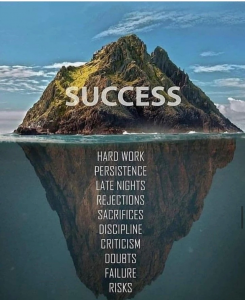Here are my takeaway points from HBR’s 10 must reads: On Mental Toughness – Part 5.
Five highly effective strategies to resolve the conflict and influence others in situations where the levels of risk and uncertainty are off the chart, are as follows:
- Understand the big picture
- Uncover hidden agendas and collaborate with the other side
- Get genuine buy in
- Build relationships that are based on trust, rather than fear
- Pay attention to process, as well as desired outcomes
Strategy 1: Get the Big Picture
Start by soliciting the other person’s or group’s point of view. Use what you learn to shape the objectives of the negotiation and to determine how you’ll achieve them.
Avoid:
- Assuming you have all the facts: “Look it’s obvious that…”
- Assuming the other side is biased but you are not.
- Assuming the other side’s motivations and intentions are obvious and probably nefarious.
Instead:
- Be curious “Help me understand how you see the situation”
- Be humble “What do I have wrong?”
- Be Open-minded: “Is there another way to explain this?”
Strategy 2: Uncover and Collaborate
Learn other party’s motivation and concerns. Propose multiple solutions and invite your counterparts to improve on them.
Avoid:
- Making open ended offers: “What do you want?”
- Making unilateral offers “I’d be willing to…”
- Simply agreeing to (or refusing) the other side’s demands.
Instead:
- Ask “Why is that important to you?”
- Propose solution for critique: “Here’s a possibility – what might be wrong with it?”
Strategy 3: Elicit Genuine Buy-in
Use facts and the principles of fairness, rather than brute force to persuade others. Arm them with ways to defend their decisions to their critics and create useful precedents for future negotiations.
Avoid:
- Threats “You’d better agree or else…”
- Arbitrariness “I want it because I want it”
- Close-mindedness: “Under no circumstances will I agree to – or even consider that proposal.”
Instead:
- Appeal to fairness “What should we do?”
- Appeal to logic and legitimacy “I think this makes sense, because..”
- Consider constituent perspectives “How can each of us explain this agreement to colleagues?”
Strategy 4: Build Trust First
Deal with relationship issues head-on. Make incremental commitments to encourage trust and cooperation.
Avoid:
- Try to “buy” a good relationship
- Offering concessions to repair branches of trust, whether actia or only perceived.
Instead:
- Explore how a breakdown in trust may have occurred and how to remedy it.
- Make concessions only if there are legitimate ways to compensate for losses owing to your non performance or broken commitment.
- Treat counterparts with respect, and act in ways that will command theirs.
Strategy 5: Focus on Process
Consciously change the game by not reacting to the other side. Take steps to shape the negotiation process as well as the outcome.
Avoid:
- Acting without gauging how your actions will be perceived and what the response will be
- Ignoring the consequences of a given action for future as well as current negotiations.
Instead:
- Talk not just about the issue but about the negotiations process: “We seem to be at conflict, perhaps we should spend some more times exploring our respective objectives and constraints”
- Slow down the pace: “I am not ready to agree but I’d prepare not to walk away either. I think this warrants further exploration”
- Issue warnings without making threats: “Unless you’re willing to work with me toward a mutually acceptable outcome, I can’t afford to spend more time negotiating”.
During tough negotiations, when one feels that most pressure to act fast and stake out an unwavering position, it is best to do neither. Control and power can be asserted most effectively, by slowing down the pace of the negotiations, actively leading counterparts into constructive dialogue and demonstrating genuine openness to others perspective. That is not giving in. It is being strategic rather than reactive. It’s thinking several moves ahead, about how your actions might be perceived. It making tactical choices, that elicit constructive responses and advance your true objectives.













